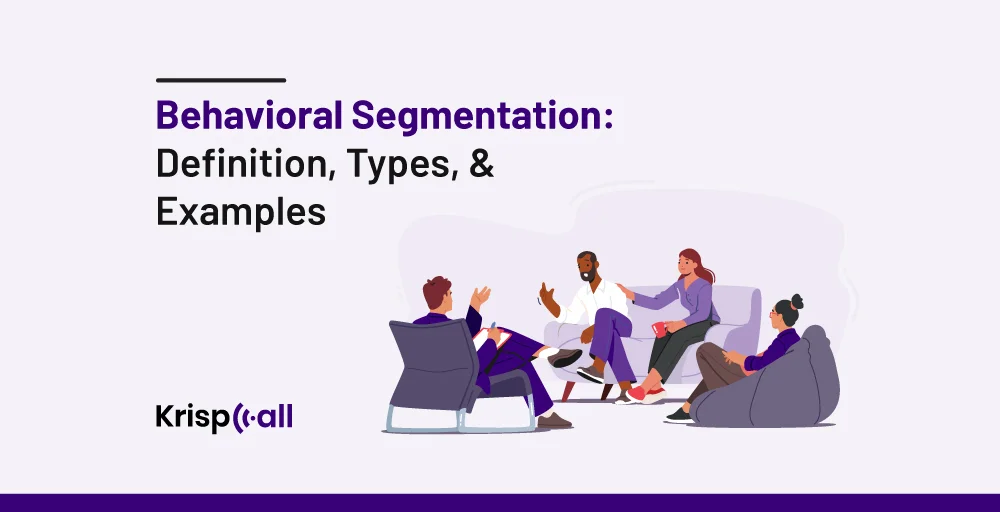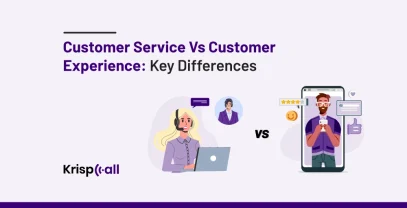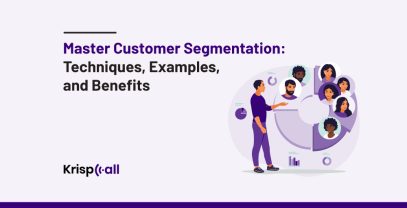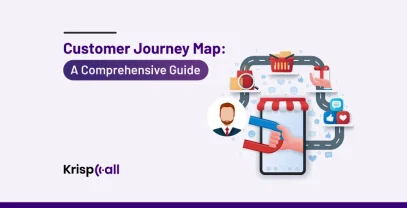Targeting 🎯 and reaching the right audience is key in the market, but using traditional demographics can be limiting. To enhance our marketing campaigns, we must understand the behavior and habits of our customers.
So, you need to know what drives consumer behavior and preferences, which can be a bit challenging to understand 😞. One of the best ways to understand it is through behavioral segmentation🙂!
To clarify matters, this article will define behavioral segmentation and show how it can improve marketing efforts. Furthermore, we will explore the six most common types of behavioral segmentation to explore how it can enhance client interaction.
Let’s get started!
🎉 KEY HIGHLIGHTS
- Behavioral segmentation is a market research technique that studies how a customer group interacts with a business or website.
- Different behavioral segmentation marketing methods are used to increase customer satisfaction and retention, develop specific market techniques, etc.
- Behavioral segmentation is classified into purchasing behavior, customer usage, benefits sought, customer loyalty, and more.
- Implementing behavioral segmentations requires collecting relevant data, defining meaningful divisions, analyzing customer interactions, and creating targeted marketing segments.
What Is Behavioral Segmentation?

Behavioral segmentation is a type of market segmentation that categorizes a customer base into groups based on how they interact when connecting with a business or website. For instance, you can analyze your customers’ purchase history, website behavior, and App engagement.
Segmenting your market involves identifying similar characteristics in your audience. After that, sales and marketing teams can optimize their messaging to be more relatable and have a greater chance of converting.
Segmentation can also be done by keeping behavioral market segmentation in mind. Which can be divided into four types, which are:
- Geographic Segmentation. Customer segments can be grouped by location, which is the simplest form of segmentation.
- Demographic Segmentation. A few factors can be used to segment the customer base according to age, gender, sex, income, ethnicity, level of education, etc.
- Psychographic Segmentation. Based on their personality traits, beliefs, and values, psychographic segmentation groups customers similarly to demographic segmentation.
- Behavioral Segmentation. As part of this process, customers are categorized according to how they relate to your brand, their purchasing habits, and how they interact with you.
Why Is Behavioral Segmentation So Essential?
Behavioral segmentation is essential as every business must segment its customers to analyze them according to their purchasing behavior, motivation, and preferences.
Using this method, you can customize marketing strategies, forecast trends, optimize new product development, etc. By analyzing actions and usage patterns, you can be sure that your customers are experiencing an enhanced service by analyzing actions and usage patterns.
Lastly, behavioral segmentation can help your business gain an in-depth understanding of your valuable customers, which can increase profitability.
Why Should We Need To Use Behavioral Segmentation Marketing?
We need to use behavioral segmentation marketing because it helps us understand and utilize customer behavioral data, such as how customers behave on websites, and then segment them. You can use customer segmentation to target specific customers based on their needs and preferences.
Behavior segmentation marketing methods help companies target specific customers. Companies can personalize product offerings or services to improve customer service by understanding what customers want.
It also helps you to effectively manage their resources by only focusing on targeted customer groups. The following points will show the true need for behavioral segmentation marketing:
- Increased Customer Satisfaction: Behavioral segmentation marketing helps you to personalize product or service experiences for a specific customer group. You can also engage customers with tailored business text messages and offers. This helps in improving customer satisfaction.
- Targeted Marketing Efforts: You can use customer behavioral data to understand customer groups. With it, you can tailor your marketing plan and efforts to a specific group to maximize the effectiveness of your marketing campaigns.
- Improve Customer Retention: Behavioral segmenting helps you understand customer segments’ motivations, needs, and preferences. After understanding this, you can focus on fulfilling the needs and preferences of different customer segments, increasing customer retention and loyalty.
- Enhance Product Development: By analyzing customer interaction with products and services, you can decide which product offerings need improvement. In addition, you can focus on developing products based on customers’ preferences.
- Competitive Advantages: By properly utilizing behavioral segmentation, you can understand the customer experience and then personalize it. Likewise, you can fulfill their needs and preferences, increasing customer loyalty and making the company more competitive.
What Are The 6 Types Of Behavioral Segmentation?
Six types of behavioral segmentation give insight into how customers behave in specific situations and help you understand what you should do to increase customer retention and loyalty.

Following are the six types of behavioral segmentation:
1. Segmentation Based On Purchasing Behavior
In this segmentation type, customers are segmented based on their purchasing behavior, activities, and history. This helps you identify customer interests and preferences. You can gather or create marketing strategies for specific products by analyzing their purchase behavior.
You can also adjust your marketing efforts to target different customer groups based on their insights and behaviors. By gaining information about your customers’ purchase behavior, you can segment them according to their purchasing decisions. Then, you can create more effective and targeted marketing campaigns for that customer segment.
2. Segmentation Based On Occasion Or Timing
This segmentation segregates customers based on the occasions or timing when they will likely make purchases, such as holidays, birthdays, or special events. You must first know which occasion attracts more customers so you can understand the overall concept of this segmentation.
The first step is understanding how to promote your brand and match the occasion’s intent by offering relevant products on special occasions. Use this information to create an effective marketing campaign to attract reliable customers on special occasions. This will help to improve or maintain customer engagement during these periods and increase your business’s sales.
3. Customer Usage Segmentation
This segmentation method helps you analyze the number of times customers use a product or service. From this, you can understand customer patterns and preferences. This helps you track customer activities and segment them according to their engagement with the product.
This segmentation helps you tailor your marketing efforts accordingly. For example, you could invite high-engagement customers to exclusive events but educate other users about unfamiliar product features. This would help you better understand customer engagement with your product.
4. Segmentation Based On The Benefits Sought
Segmentation through this method helps you group customers based on what benefits they liked when choosing your product or service. To sort customers in this segment, you can conduct surveys and interviews to understand why customers like your product. Then, categorize them based on the benefits they prioritize.
Then, use this information to develop marketing campaigns highlighting the benefits they liked. Doing all this helps you identify and fulfill customer needs, which increases customer satisfaction and strengthens brand loyalty.
5. Customer Loyalty Segmentation
Customer loyalty segmentation groups customers based on their level of loyalty to a brand. This means how much a customer is involved with your product and how much they spend. Understanding customer loyalty helps classify customers into loyalty levels, such as frequent buyers, one-time shoppers, and brand switchers.
Once you have done this segmentation, you can make different offers based on these loyalty levels, such as providing loyalty rewards and discounts to frequent buyers. This approach will ultimately help your businesses build stronger customer relationships and increase customer retention rates.
6. Segmentation Based On The Buying Stage
This means grouping customers based on their awareness and engagement with your product. To do this, you must understand how customers are engaged with your product and how they know it. Customers only engage with your product when they understand it.
If not, you must engage customers by marketing your product, reaching out to them, building a customer acquisition strategy, and tailoring your messages to resonate with them. This will help you deliver the right message to customers and develop more effective and targeted marketing campaigns that resonate with each engagement group.
Real-Life Behavioral Segmentation Examples
Examples of real-life behavioral segmentation can be found on various platforms. Businesses gain an edge over the competition by segmenting customers based on their activities rather than their presence.
They monitor and track their activities and then develop strategies to improve their marketing and sales. You can understand its effectiveness by looking at real-life examples like:
- Customer Loyalty (Airline Loyalty Program): Understanding airlines’ separate customer groups based on their traveling history is essential. Therefore, customers traveling more frequently get benefits from the airline, such as priority boarding and free baggage checking.
- Occasional/Timing (Starbucks Happy Hour Deals): Starbucks uses behavioral segmentation to promote its afternoon offers, like happy hour discounts, to its regular morning customers. This helps them to increase customer engagement during different time periods.
- Netflix Personalized Movie Recommendations: Netflix uses behavioral segmentation to make personalized movie recommendations based on users’ viewing behavior, such as what movies or genres they watch and how often they watch them.
- Personalized Recommendations (Airbnb’s Accommodation): Airbnb uses behavioral segmentation to make personalized accommodation recommendations based on users’ travel behavior, such as their preferred locations, amenities, and travel dates.
How To Implement Behavioral Segmentation For Growing Engagement?
Understanding customer behavior can be challenging, especially in less active segments. To apply behavioral segmentation effectively, customers must interact with your brand multiple times. Tracking fundamental interactions over time is essential to uncover patterns.
Each type of customer behavior is complex, and progress can be challenging. Understanding behavioral customer data across multiple segments is necessary to understand customers’ needs and habits fully.
The following process defines how to implement behavioral segmentation for growing engagement:
- Collect Relevant Data: You must collect correct and accurate customer data from websites, purchase history, surveys, and customer feedback. Then, you must use these data to determine customer behavior and patterns. Understanding these behaviors and patterns allows you to create new segments for customer groups.
- Define Meaningful Segments: Then, analyze the collected data to understand behavioral segmentation variables, such as purchase behavior, usage behavior, loyalty behavior, and engagement behavior. After analyzing the data, define meaningful segments to group customers, which will help you tailor your marketing efforts to their specific needs and preferences.
- Analysis Of Customer Interactions: After creating segments, you must evaluate your customers’ engagement closely to examine how they interact and what caused them to behave in a certain way. Understanding this will give you a better insight into each segment’s motivations and preferences.
- Create Targeted Marketing Campaigns: After understanding each segment’s motivation and preferences, develop and implement targeted marketing and engagement strategies for them. Focusing on each segment helps to personalize the customer segment to address specific behaviors, improving customer satisfaction and retention.
- Monitor And Adjust Strategies: Finally, monitor the effectiveness of these marketing strategies regularly. You can do this by checking customer feedback and their changing behavior. As their effectiveness decreases, change your strategy. This will ensure you maintain a relevant and engaging approach to your audience.
Conclusion
If you know your customers better, your marketing materials will reach them more effectively at the right time. Behavioral segmentation can help with this!
Segmenting based on your customer’s behavior is a powerful method of understanding why they purchase your products or services. You can gain valuable insight into customer purchasing patterns, preferences, and needs by analyzing customer behavior on websites and browsing history.
With the segmentation in place, you can gain additional insights into your customer behaviors and preferences, making it easier to customize your marketing efforts for your customers based on their geographic and demographic segments.
FAQs
What are the objectives of Behavioral segmentation?
The objectives of behavioral segmentation are understanding customer needs, providing personalized experiences, increasing customer retention, improving product development, maximizing profits, etc.
What are the common types of Behavioral segmentation?
The six common behavioral segmentation types are based on purchasing behavior, occasion or timing, benefits sought, customer loyalty, customer usage, and buying stage.
What is Behavioral Marketing?
Behavioral marketing is a marketing strategy that segments customers based on their behavior to deliver personalized and relevant messages, products, or services. For example, Imagine a clothing retailer tracking customer behavior whenever a customer visits the website and browses through clothes. Then, suggest related products in their further visits.
What are the characteristics of Behavioral segmentation?
The characteristics of behavioral segmentation are customer behavior, precise targeting, relevant messaging, improved customer satisfaction, increased conversation rate, etc.





